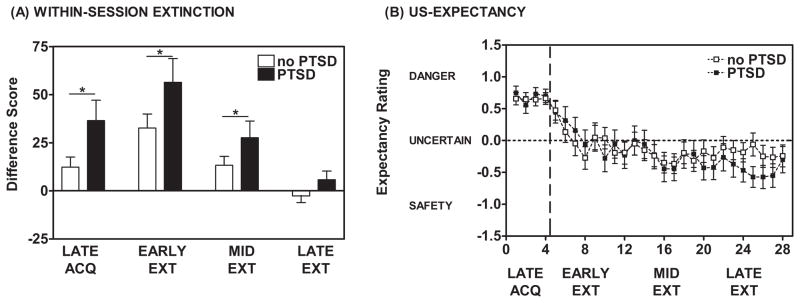Figure 4.
(A) During Early and Mid-Extinction, individuals with PTSD (dark bars) displayed higher fear-potentiated startle responses to the previously reinforced CS+ as compared to those without PTSD (open bars). * ANOVA, significant Between-Subjects Effect, F(1,114) = 4.06, p < 0.05. (B) Based on US-expectancy ratings, the groups with and without PTSD did not significantly differ in their expectancy of the US during the Fear Extinction phase. Both groups exhibited a reduction in their expectancy of the US as the Fear Extinction phase progressed (F(1,47) = 16.30, p < 0.001). Responses of DANGER indicated that an individual expected the unconditioned stimulus (US) on a CS trial and were scored as +1. Responses of UNCERTAIN were scored as 0 and responses of SAFETY indicated that an individual did not expect the US on a CS trial and were scored as −1.

